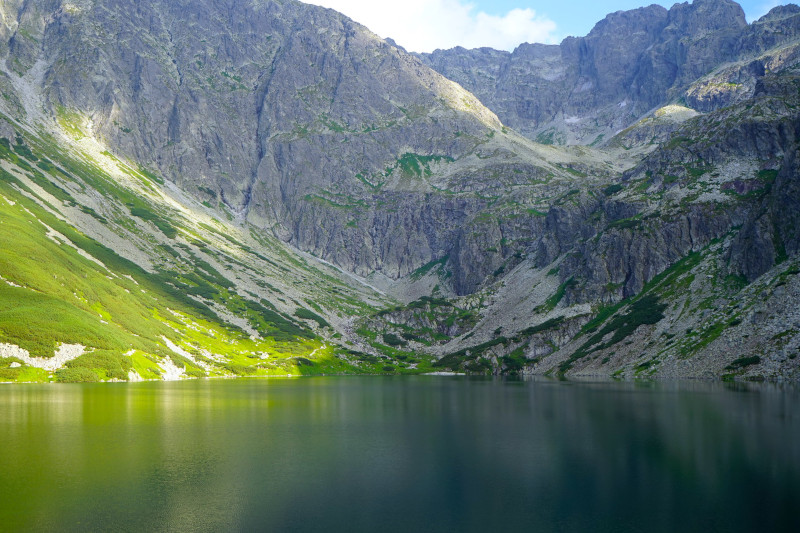
Tatra Mountains Facts
- The simple term of Tatra Mountains serves as the most frequently used name for these amazing constructions of geological processes. It’s not the only title they hold, though. They also hold several other, even shorter one’s. These include the terms Tatrasa or Tatra.
- Those, however, merely represent the english language appellations for the marvels of Nature and natural forces. In some of the many other languages common to the region in which they sit, they hold others. Two tongues native to the area call it the similar name of Tatry.
- Regardless of which of these epithets one chooses to employ when speaking of it, the formation remains an impressive structure. Together, they also constitute a subset of a more extensive range of peaks. Collectively, though, these qualify as the highest group in the range.
- Fortunately, the magnificent Tatra Mountains now enjoy a very special status. The set of stunning mountains forms a natural border between the two countries in whose language it’s known as Tatry. Both of those nations now recognize the region as a special National Park.
- This status creates a unique situation, though. Each country created a Tatra National Park containing that specific portion of the range on their side. Due to this special status, UNESCO officially recognized the two sites jointly as a single, transboundary biosphere reserve.
Related Articles
Tatra Mountains Physical Description
The mesmerizing Tatra Mountains never fail to capture the attention of those individuals fortunate enough to visit the site. The geological wonder does so for a surprising variety of reasons, though. That’s true since they boast both truly remarkable beauty and impressive physical statistics.
Intriguingly, these breathtaking marvels extend along the earth in an almost perfectly straight line. That further stretches for approximately 35 mi (56.3 km). Its width naturally varies along its course, though. But, at its widest point the formation measures roughly 12 mi (19.3 km) across.
Overall, this majestic work of Nature and geological processes contains a total area equaling about 303 sq mi (785 sq km). Of that, however, roughly 77.7% lies within the borders of one country. The remaining 22.3% therefore falls inside the national boundaries of the other nation sharing it.
The breathtaking Tatra Mountains remain deseervedly renowned for the ruggedness of the terrain, and rightly so. Each peak juts strongly upward. Most possess a covering of snow at the top for much of the year. The majority also have numerous sharply created ridges, both lateral and forked.
A large percentage of individual sites in both nations also boast substantial measurements. The highest point in one country, named Gerlachovský štít, possesses an altitude equaling 8,710 ft (2,655 m). Yet, the tallest site located in the other country, named Rysy, stands 8,200 ft (2,499 m) tall.
Tatra Mountains Location, Formation, and Ecology
Nature and time created the stunning Tatra Mountains in a region of the earth’s surface already renowned for its great abundance of geological wonders. That precise setting therefore comes as no surprise to anyone. It formed as part of what’s now the very beautiful continent of Europe.
More specifically, its creation placed the chain in the approximate central region of the landmass. There, these amazing structures straddle the national borders of the countries of Poland and Slovakia. They themselves, however, also form part of the even larger Carpathian Mountains.
Interestingly, the origins of these astonishing features represent a combination of both relatively recent and ancient. That’s because the underlying structure, an outcropping of granite formed during the Mesozoic Period. That places its beginings between 250 – 100 million years ago.
Above that, however, numerous other layers subsequently formed later. Between about 65 – 1.8 million years in the past, igneous, metamorphic, and sedimentary rocks later formed. The latter type, though, now form the basis of the surface, including limestone, dolomite, and sandstone.
Despite their generally rugged nature, however, the hauntingly magical Tatra Mountains still possess a fully thriving ecosystem. Luckily, their placement puts them in the general temperate zone of the continent. This allows for moderate levels of precipitation throughout the entire year.
More than 3,000 species of plants, fungi, and lichens reside on the slopes present here. These vary with altitudes, though. Due to the extreme abundance of flora, fauna also does well here. Those include numerous mammals, as well as a few reptile and amphibians, plus fish and insects.
Features Sharing Its Region
Check out our other articles on 3 Awesome Antarctic land Species, Golden Jackal, Komodo Island, Coral Honeysuckle, East African Lowland Honey Bee, Rough-nosed Horned-Lizard
